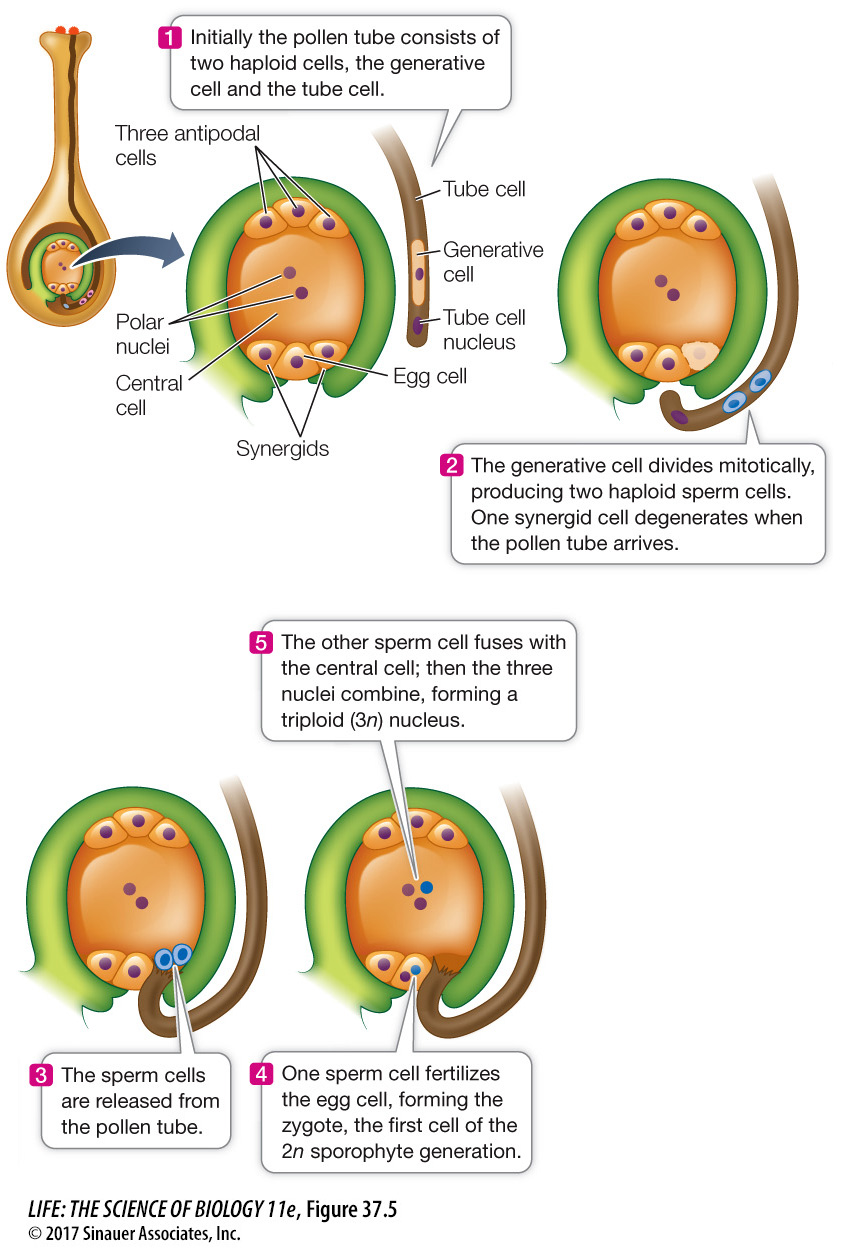Angiosperms perform double fertilization
In most angiosperm species, the mature pollen grain consists of two cells: a large tube cell enclosing a much smaller generative cell. When a compatible pollen grain lands on the stigma of a plant of the same species, it germinates, and the pollen tube grows through the style tissue to the embryo sac. During this process, the generative cell undergoes one mitotic division and cytokinesis to produce two haploid sperm cells (Figure 37.5, steps 1 and 2).

Animation 37.1 Double Fertilization
Two fertilization events now occur. One of the two synergids degenerates when the pollen tube arrives and the two sperm cells are released into its remains (Figure 37.5, step 3). Each sperm cell then fuses with a different cell of the embryo sac (Figure 37.5, steps 4 and 5). One sperm cell fuses with the egg cell, and the two nuclei fuse, producing the diploid zygote. The other sperm cell fuses with the central cell, and its nucleus fuses with the two polar nuclei, forming a triploid (3n) cell. Immediately after fertilization the triploid nucleus undergoes rapid mitotic divisions to form a specialized nutritive tissue, the endosperm. In most species the endosperm nucleus initially divides without cytokinesis, forming a large, multinucleate cell, and cell walls form later between the nuclei. After the endosperm begins developing, the zygote undergoes mitotic division to form the new sporophyte embryo. The developing embryo uses the endosperm tissue as a source of nutrients, energy, and carbon-
The remaining cells of the male and female gametophytes—
Double fertilization, a hallmark of angiosperms, is so named because it involves two cell fusion events:
One sperm cell fuses with the egg cell.
The other sperm cell fuses with the central cell.
The fusion of a sperm cell with the central cell to form the triploid endosperm nucleus is one of the defining characteristics of angiosperms.